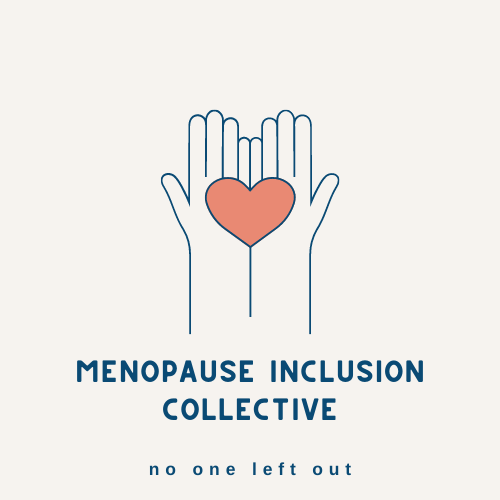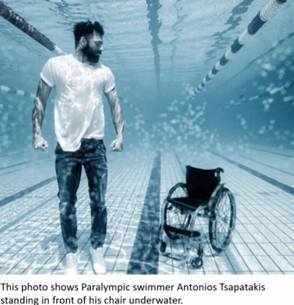Support International Womens Day and Embrace Equity
Why ‘menopause’ work alone is not enough to advance inclusion, we must also take equiatable action .
We believe that people should be equals in their experience of menopause, and globally, there should be pathways to a dignified menopause for all. On the path to equality we must take equitable action.
During the week of International Womens Day and on the theme of #embraceequity there is no better time than to renew our commitment to inclusion in the menopause sector. But we need your help so we’re asking you to also embrace equity in the #Menopause movement, taking a moment to think how you might be able to remove barriers to people being involved in your menopause initiative.
We believe that people should be equals in their experience of menopause, and globally, there should be pathways to a dignified menopause for all. On the path to achieving equality we must take equitable action.
International Womens Day which includes women, trans and non-binary people, is no better time than to renew our commitment to inclusion in the menopause sector. But we need your help so we’re asking you to also embrace equity in the #Menopause movement, taking a moment to think how you might be able to remove barriers to people getting involved in your menopause initiative.
This photo below is powerful in demonstrating the importance of removing barriers and obstacles, to create the right environment for equality of outcome. In this instance by adapting his environment, Antonios Tsapatakis is able to stand.
Paralympian Antonios Tsapatakis is shown under water in a swimming pool, next to his wheel chair, able to stand, having had his environment adapted.
Home | SPINALpedia
When barriers to access are removed that is ‘equitable’ action, and more people are included and the chance of equality of outcome is increased. We won’t always be able to reasonably create a change like the one above, cost and reasonability is a consideration of course, but there will be obstacles for people accessing your resources, relating to your resources or being included and feeling part of your ‘group’ or network that you might be able to more easily include with simple changes.
But first, why does ‘Inclusion’ in Menopause matter anyway?
In the UK, the spotlight is still centred on a mostly white, cis-gendered experience and of someone with reasonable level of wealth and education experience. This isn’t reflective of the true diversity of experiences and some people will feel and may actually be excluded, resulting in inequality of access to information and support.
This lack of representation in the sector and many services, may negatively impact people from minority groups and / or with protected characteristics, reducing motivation and trust to reach out for crucial menopause support and guidance, ultimately exacerbating societal inequality.
So what can you do?
In #embracingequity for #IWD2023 We ask for your support to make menopause
Conversations
Policies
Services
Talking spaces
consider the needs of everyone experiencing menopause symptoms and make appropriate adjustments to enable more people to get involved in creating equality of outcome where everyone has a dignified menopause experience.
“But all work to support menopause is about equality… isn’t it? ” we hear you cry! However just aiming for equality alone is not enough.
In an aim to increase awareness of menopause, it’s signs and impact and how to help, we must understand that people start from different places when trying to access a health service, read a resource or attend a training session. Taking a ‘one size fits all’ approach to what you offer will not serve everyone, people will always be excluded, so true inclusion and belonging in the menopause sector requires equitable action to remove barriers and obstacles to access and we can all take a moment to review and improve how we go about sharing our offer and serving our customers.
How does this work in practise?
Let’s start with definitions..
Equality – equality of outcome, everyone is able to access accurate menopause information, relatable resources and accessible services – that is the goal we’re all working towards.
‘Equity’ – the action of making changes to reduce and remove barriers to access. It’s what we do on the path to Equality. It matters in enabling us to achieve our goal.
Case Study
There are many different scenarios where you might be asked to make an environmental change to your offer, in this case study we’ll take an example of a regular online Menopause Awareness seminar that you say is open to ‘all’ so you believe you are ‘equal’ in your actions in inviting anyone to attend, this is not to dispute your laudable intention by the way!
You notice over time that it’s the same kind of people coming, you are becoming more aware of the visible diversity that you’re not seeing and the perspectives of menopause you’re not hearing about. No-one is talking about disability or neurodivergence, or mental health, a younger menopause event, or the cost of living crisis and how these factors are impacting their menopause experiences, but you know these experiences matter, and you want to be able to help a wider range of people. You are aware your service might not be achieving equality of outcome.
What actions can you take to remove some of those barriers and encourage more people from divergent backgrounds to attend and so benefit from your service?
Here’s 10 simple tips to creating a more inclusive environment…
Collaborate with another menopause provider that represents or works with people from a minority group.
Guest experts come from a range of backgrounds so that more people feel represented.
Offer a tiered fee system so more people can access the information.
If breakout rooms are happening this is optional. This might help autistic people or anyone experiencing anxiety or overwhelm in smaller groups.
Alter the language you use in promotional material so that trans and non-binary people feel included from the start.
Modify the language you use throughout the session too, this helps people feel included and also helps more people understand that menopause happens to women, trans and non-binary people.
Offer a replay video for those that need more time to process information.
Operate a ‘no surprises!’ way of running your menopause events, let people know what they can expect during the session, help people plan ahead, great for people with any form of anxiety about navigating new spaces.
Ask in your marketing material for people to let you know what they need in order for them to be able to attend.
Ask for feedback at the end of every session on what could be done better and what changes might help someone attend again.
If you’re a health care provider you can find useful Case Studies here
It’s important to note that even by making small changes to your offer, some people with protected characteristics may feel safer in a group catering for their specific needs.
This event from The Menopause School and Menopause Talk is a great example of collaboration that creates an event that reaches people who otherwise might find a mainstream menopause group does not serve their needs.
In sharing this, we recognise that in the menopause sector we’re all at different starting points in understanding routes to equality, but we can all contribute to advancing gender equality and equity in menopause movement by collaborating, offering informative events at a range of costs, and sharing guidance and support through an anti-racist and intersectional feminist lens, to people and organisations wanting to embrace inclusion in menopause, and create lasting change.
There are many ways to make menopause more inclusive aside from the changes we’ve already mentioned here, if you would like support with making your work more inclusive to menopausers from all backgrounds then get in touch here
Diolch / thank you
Sarah
Reasonable adjustments in practice | Equality and Human Rights Commission (equalityhumanrights.com)
Health and social care case studies | Equality and Human Rights Commission (equalityhumanrights.com)




